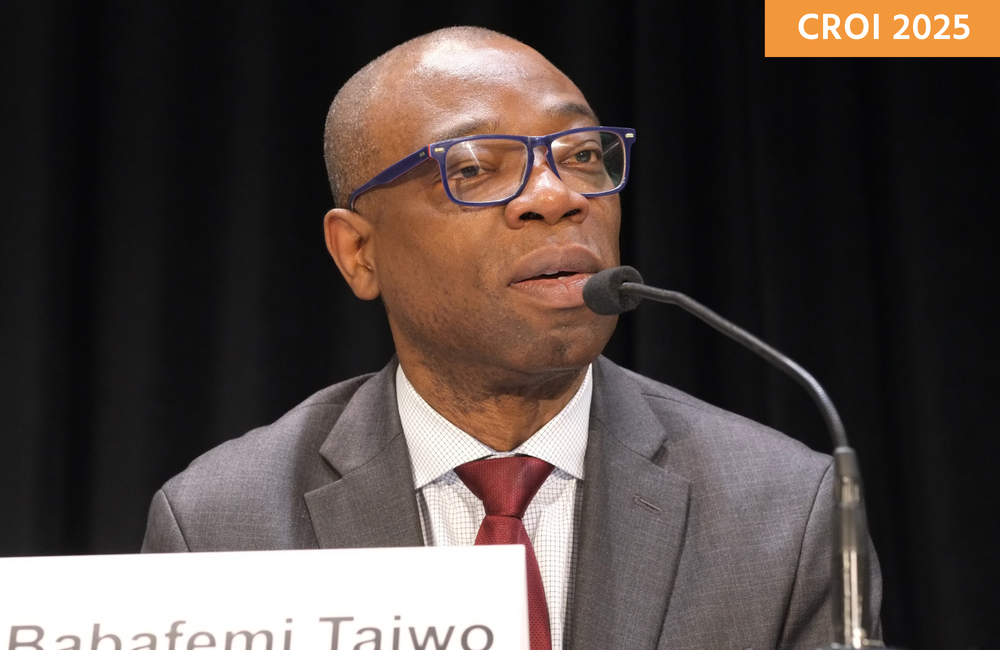
N6LS, a broadly neutralising antibody from ViiV Healthcare, could potentially be a partner for cabotegravir (Vocabria) in a long-acting HIV treatment regimen, according to results from the EMBRACE study presented at the Conference on Retroviruses and Opportunistic Infections (CROI 2025) in San Francisco.
“N6LS administered IV or subcutaneous every four months in combination with monthly [long-acting cabotegravir] maintained viral suppression in a high proportion of adults with baseline N6LS sensitivity,” Dr Babafemi Taiwo of ViiV and colleagues concluded.
Taiwo and his team evaluated the safety, efficacy and tolerability of long-acting cabotegravir plus N6LS. Injectable cabotegravir and rilpivirine, administered by injection once monthly or every other month, is currently the longest-acting complete antiretroviral regimen. But other durable partners would be welcome, especially for people who have developed resistant to NNRTIs such as rilpivirine.
People living with HIV normally produce HIV-specific antibodies, but these mostly target parts of the virus that are hidden or highly variable. However, a small proportion of people naturally make broadly neutralising antibodies (bnAbs) that target conserved parts of the virus that do not change much. These specialised antibodies are being explored for HIV prevention, treatment and cure research. As with antiretroviral drugs, however, the virus can develop resistance to bnAbs, so they are best used in combination therapy.
N6LS (also known as VH3810109) targets the gp120 protein on HIV’s surface, which the virus uses to bind to CD4 T cells. In the previous phase I SPAN study, ViiV researchers showed that N6LS had a favorable safety profile in HIV-negative adults when given by either intravenous infusion (60mg/kg) or by subcutaneous injection (3000mg) in combination with hyaluronidase, an enzyme that aids absorption and enables higher dosing.
The phase IIa BANNER study found that a single IV infusion or subcutaneous injection of N6LS as monotherapy substantially reduced viral load in HIV-positive people who had not yet started antiretroviral treatment. But like other single agents, the bnAb alone does not maintain viral suppression for long. The phase IIb EMBRACE trial, therefore, combined N6LS with long-acting cabotegravir.
EMBRACE, conducted at 45 sites in the US and Puerto Rico, enrolled 125 HIV-positive adults with viral suppression (below 50 copies) for a year who were screened to ensure that they were sensitive to N6LS. They had no prior history of virological failure, had a CD4 count of at least 350 and did not have hepatitis B. More than 80% were men, 63% were White, 28% were Black, about 40% were of Latino ethnicity and the median age was 53 years.
The study participants were randomly assigned to receive injectable cabotegravir every month plus N6LS given by either IV infusion or by subcutaneous injection every four months, using the same doses as SPAN, or to stay on their current standard-of-care regimen.
After six months, 96% of people randomised to N6LS infusions and 88% of those who received N6LS injections maintained viral suppression, as did 96% of those who stayed on their standard baseline regimen.
Two people in each N6LS group, but none in the standard-of-care group, experienced confirmed virological failure, defined as two consecutive viral load measurements of at least 200 copies. All regained viral suppression when they resumed standard oral treatment. The two who received infusions had evidence of N6LS resistance but no integrase resistance mutations. The two who received injections did not show N6LS resistance, but one had an integrase resistance mutation (Q148R).
N6LS was safe when given by either IV infusion or subcutaneous injection, with no drug-related serious adverse events. But the infusions were better tolerated. Four infusion recipients (8%) experienced infusion/injection site reactions (ISRs) such as pain or redness, all of them mild. In contrast, 25 injection recipients (51%) experienced ISRs, ranging from mild to severe. What’s more, ISRs lasted longer with injections compared with infusions (median 4 vs 2 days), and some injection recipients had reactions lasting up to two weeks. However, no one in either group discontinued treatment due to ISRs.
ViiV considers these findings promising enough to advance the combination to the second part of the study, which will evaluate long-acting cabotegravir given every other month plus N6LS given every six months using the IV infusion formulation.
However, this regimen will face competition from Gilead Sciences, which is developing a complete twice-yearly regimen consisting of its long-acting HIV capsid inhibitor lenacapavir (Sunlenca) administered by subcutaneous injection plus two bnAbs administered by intramuscular injection (also presented at CROI).
Leone P et al (Taiwo B presenting). VH3810109 (N6LS) efficacy and safety in adults who are virologically suppressed: the EMBRACE study. Conference on Retroviruses and Opportunistic Infections, San Francisco, abstract 203, 2025.
